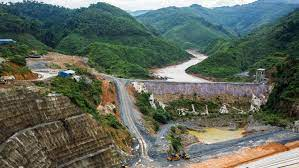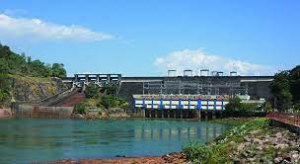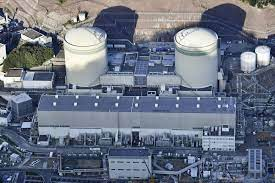
Two reports on hydropower station and nuclear power station collapse accidents
Dam collapse at Laos hydropower station, hundreds people missing
On July 24, 2018 local time, a hydropower station dam collapsed in Attapeu Province, Laos, causing several villages to be flooded. At least five people died and hundreds more were missing.
According to the Lao Pathet Lao News Agency, the Sampien-Sangnanne Hydropower Station is located in Sanamxay County, Attapeu Province, about 570 kilometers southeast of Vientiane, the capital of Laos. It is mainly invested and constructed by Korean companies and is still under construction.
The dam of the hydropower station collapsed at around 8 pm local time on the 23rd, and 5 billion cubic meters of water was released within a few hours. Several people have been killed, hundreds are missing, and 6,600 people’s houses have been flooded.
According to reports, Lao Prime Minister Thongloun Sisoulith postponed the government work meeting after the accident and immediately rushed to Sanamxay County, where the accident occurred, to urge rescue work.
According to a document issued by the General Office of the Lao Prime Minister’s Office on the 24th, the Lao government has designated the affected areas as national emergency disaster areas and requires all walks of life to actively help people affected by the accident.
Relevant departments in Attapeu Province have also issued announcements, requiring party and government agencies, business groups, officials, military police, and people from all walks of life to provide emergency assistance such as food, clothing, drinking water, and medicine to the affected people.

Japan’s TEPCO admitted that a nuclear power plant was damaged after a strong earthquake, with wall cracks and groundwater leakage.
According to CCTV International News Weibo, Japan’s Tokyo Electric Power Company said on the 8th that after the Noto Peninsula earthquake on January 1, “multiple wall cracks and groundwater leakage occurred in the turbine building of the Kashiwazaki Kariwa Nuclear Power Plant in Niigata Prefecture” “. TEPCO has previously claimed that “no abnormal or liquefaction damage to facilities caused by the earthquake was found.”

Causes and Solutions of Cracks in Concrete Power Stations
Temperature changes during construction:Â During the concrete pouring and hardening process, due to the influence of cement hydration heat, ambient temperature, and other factors, the temperature difference between the inside and outside of the concrete may cause cracks.
Shrinkage deformation:Â Concrete will shrink during the hardening process, and cracks will occur if the shrinkage is restrained.
Construction quality issues: Improper concrete mix design, lax construction process control, and inadequate maintenance may lead to cracks in concrete power stations.
To solve the problem of cracks in concrete power stations, the following measures can be taken:
Optimize concrete mix proportion design:Â Reduce the thermal cracking sensitivity of concrete by rationally selecting cement varieties, adjusting aggregate gradation, and adding admixtures.
Strengthen construction process control:Â During the construction process, the concrete pouring temperature, vibration technology, curing conditions, etc., must be strictly controlled to ensure the quality and performance of the concrete.
Adopt preventive measures:Â During the design stage of concrete power stations, factors such as temperature stress, shrinkage deformation, etc., should be fully considered, and preventive measures should be taken, such as setting expansion joints, post-casting belts, etc., to reduce the possibility of cracks.
Treatment of cracks:Â For cracks that have already occurred, methods such as surface sealing, grouting filling, and steel plate pasting can be used to repair cracks based on the nature and severity of the cracks.
Supplier
TRUNNANO(cabr-concrete.com)Â is a supplier of concrete crack reducing admixture and other concrete additives, which is concrete and relative products with over 12 years experience in nano-building energy conservation and nanotechnology development. It accepts payment via Credit Card, T/T, West Union and Paypal. Trunnano will ship the goods to customers overseas through FedEx, DHL, by air, or by sea. If you are looking for high quality concrete crack reducing admixture, please feel free to contact us and send an inquiry. (sales@cabr-concrete.com).